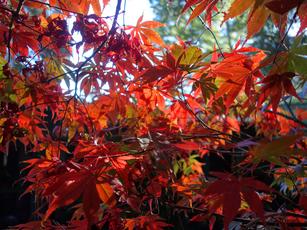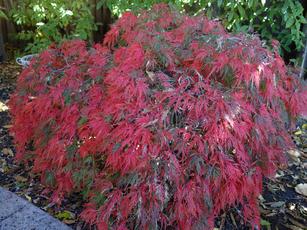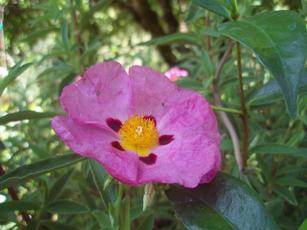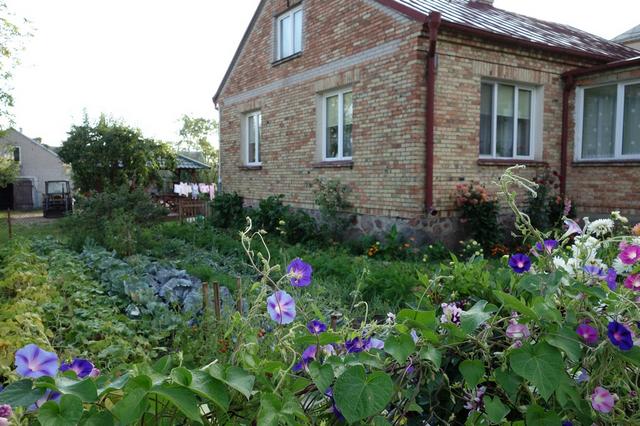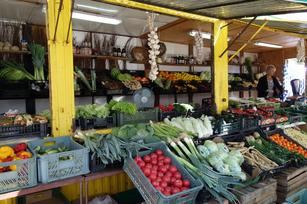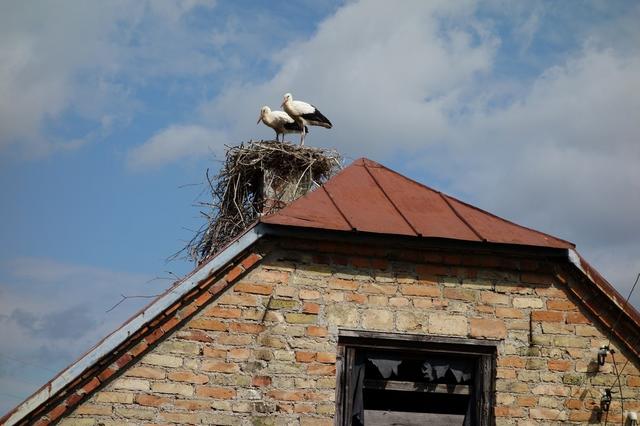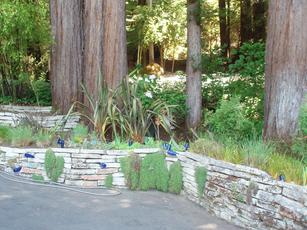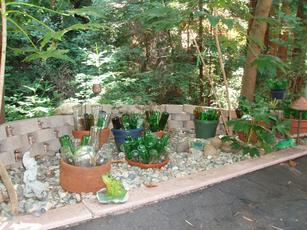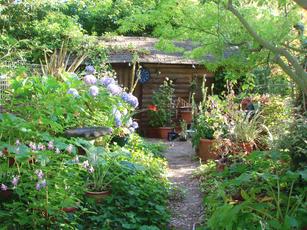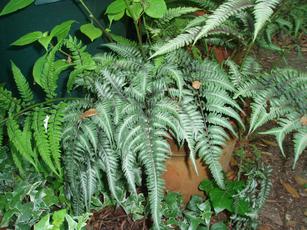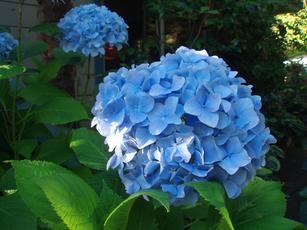Fall is the perfect time of year for many things– long drives, walks in the forest, beautiful sunsets. It's also a great time of year to transplant those plants in your garden that aren't in quite the right place and to create new exciting combinations of foliage, color and texture that are just perfect.
I"m always newly inspired when I see common plants combined in ways I hadn't thought of. Some vignettes are simple repetitions of just two plants while others might include 3-4 plants with different characteristics. A recent meeting of APLD ( Association of Professional Landscape Designers ) of which I am a member, showcased fabulous ideas for plant combinations. In addition to these plants looking great together visually they share the same cultural requirements which is a must. No sense planting a water-loving partial shade plant next to a low water use plant that requires full sun.
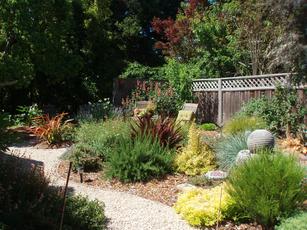 Here are some of the awesome plant combinations from gardens I have designed and from fellow designers that I think are particularly appropriate for our area.
Here are some of the awesome plant combinations from gardens I have designed and from fellow designers that I think are particularly appropriate for our area.
In a sunny garden colorful flowers surrounded by soothing green foliage creates a space to linger. The hummingbirds and butterflies attracted to the nectar of the flowers are an added bonus. The plants that create this beautiful scene combine strong, linear leaves from phormium 'Amazing Red' with the golden foliage of abelia 'Kaleidescope'. Bright red and white flowers of the hummingbird-magnet salvia 'Hot Lips' combined with the soft green needles of grevillea lanigera 'Mt.Tamboritha' and the salmon pink flower spikes of phygelius (Cape Fuchsia) invite you to sit awhile in this garden.
Plant combinations that echo each other in color work well together. Think of the famous White  Garden at Sissinghurst Castle in England. Phormium 'Cream Delight' looks great with so many plants the combinations are nearly endless. Consider growing it with Elijah Blue fescue grass and surrounding the group with a hardy groundcover like the succulent semperviven ( Hens and Chicks ).
Garden at Sissinghurst Castle in England. Phormium 'Cream Delight' looks great with so many plants the combinations are nearly endless. Consider growing it with Elijah Blue fescue grass and surrounding the group with a hardy groundcover like the succulent semperviven ( Hens and Chicks ).
Silver or grey foliage always looks smart when paired with pink shades. Again that go-to plant that adds architectural interest, Phormium 'Evening Glow', provides the pink element with bronze edged leaves with red centers as does the dusty rose color of Sedum 'Autumn Joy' flower clusters. Add the silver foliage of euphorbia wulfenii ' Glacier Blue' and Russian sage to complete the look.
Another group of plants that combine well have flowers of similar color. Hardy geranium 'Rozanne' with violet blue flowers pairs well with the soft blue ground morning glory, lavender-blue flowering catmint and penstemon 'B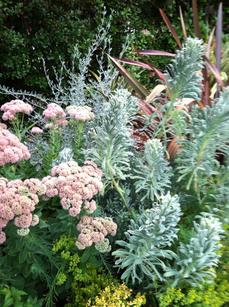 lue Bedder'. These perennials all grow in full sun but can tolerate some shade and like moderate watering.
lue Bedder'. These perennials all grow in full sun but can tolerate some shade and like moderate watering.
Other combinations that might look great in your own garden include natives mimulus, juncus patens and deer grass with Pacific wax myrtle. Or try growing Verbena lilacina 'De La Mina' alongside the blue tones of festuca californica. Under native oaks, heuchera maxima along with iris douglasonii won't require much summer water which will make the oaks happy too.
At this time of year I'm always drawn to combinations with warm, rusty tones. Purple smoke bush fall foliage pops when combined with gold flowering rudbeckia Goldsturm and purple coneflowers. Or how about Apricot Sunrise agastache growing with Spanish lavender and Big Ears lamb's ears? Then again you might like the gold flowers of Harmony kangaroo paw blooming for months alongside Carex testacea (Orange Sedge).
Shady spots needing some pizazz could look to the huge leaves of bergenia 'Bressingham Ruby' with their brilliant magenta late winter flower spikes and combine it with golden yellow sweet flag (Acorus 'Ogon'). Another combination I like for the shade is asparagus spregeri and blue flowering Dalmation Bellflower groundcover.
Whether you're transplanting existing plants in new exciting combinations or creating new ones, fall is a great time to spend time in the garden.

